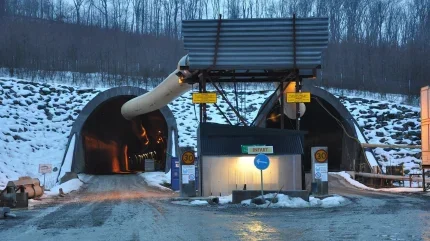
“I knew I wanted to be a civil engineer when I was 10 years old,” says Alastair Biggart, currently an Independent Tunnelling Consultant (ITC) to the New Metro North Project in Dublin and the Hallandsas Project in Sweden. “My boss and mentor was Jim Buchanan of Sir Robert McAlpine who gave me a lot of help in learning the practical aspects of tunnelling. However an even stronger reason was that my father was a tunneller and with his cousin owned Mitchell Brothers Sons and Company, who were a specialist tunnelling contractor.”
Alastair earned his degree in Civil Engineering at Loughborough University in the 50s. Afterwards, his national service was spent in the RAF as a pilot. He then spent four years working for three different contractors, six years with Mitchell Brothers, followed by 12 years with Edmund Nuttall. He joined Lilley Construction in the early 80s as a technical director working on the Cairo Wastewater Project. In 1992 Alastair had a career shift, moving from contracting into consultancy and joined Mott MacDonald to work on the Storebaelt Eastern Tunnel Project.
He retired from full time work in 2001, though this hasn’t stopped him. “I have enjoyed every minute of it,” he says. For the last 11 years as an ITC, he has worked on 18 different projects all over the world, a key reason for his enjoyment. “I have always enjoyed every aspect of tunneling […] because of the large variety of work and the continuing challenges.” He adds, “I have not found it stressful as I was largely not acting in a management role, but also because I have never suffered from work related stress.”
Alastair began work on the Hallandsas project in 1999 and has for the majority of this time visited the project every couple of months. He has given advice largely on technical matters, but also organisation, health and safety and, early in the project, advised on the type of TBM to be used. He joined the Dublin Metro North project a year ago, which he normally visits on a monthly basis.
He advises on the use of closed face TBMs and tunnelling in general, including settlement control, vertical alignment, submittals, risk registers and interfaces. He also attends technical workshops for bidders. “Fortunately my wife, Mary, likes travel so she has very often come with me,” he says.
Does he have a favourite moment from tunnelling? He wryly points out that he is more used—from interviews for work—to being asked if he has any ‘horror stories’ and how he has coped with them. “I have been fortunate and have not been involved in any disasters,” he says. “However an ‘unfavourite’ moment was when I was working on the Cairo Watewater project back in 1986. I stayed too long in the compressed air and ended up with the bends, not an experience I recommend. On the other hand, you know what they say: ‘you are not really a rider unless you have fallen off your horse at least once.’” He does have a treasured moment, however: the memory of the Channel Tunnel breakthrough and 50 British tunnellers charging through to the French side to selflessly help them drink their wine and smoke their cigars. He reflects that the French have “slightly different safety rules from us.”
So what is next for Alastair Biggart? “Who knows? […] I don’t go looking for new work, but if I am asked and it sounds interesting I may take on a new project. If it all finishes in the near future, then I shall just have to write a book about some of the more interesting projects I have worked on,” he says. “On the other hand I may just help on the farm on which we are now living with our daughter, son in law and their four children. I am fascinated to find that the mechanical sweeping arrangements for the cow sheds for the 350 cows work on exactly the same principle as the segment feeder in a TBM!”
“I have never for a moment regretted my 34 years as a contractor and now my 18 years as a consultant and a gentleman. I have been very fortunate and have worked with many inspiring engineers, including John Bartlett of Motts, Richard Triggs of Nuttalls and Jim Buchanan of McAlpine.”
Alastair Biggart with the TUCSS president Ow Chun Nam Biggart is consultant to the Hallandsas project in Sweden






